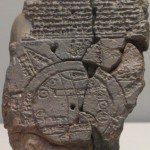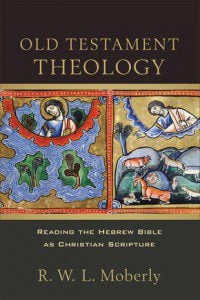 If you read the Gospel of Mark and then Matthew and compare them when they can be easily compared you will be forgiven for thinking Matthew is annotating Mark’s Gospel. This is indeed the claim of Richard Hays in his new and very clear and compelling record of how the Gospel writers read the Bible — they read it backwards. Once they encountered Christ they were compelled to read the story toward Christ. (See his new book Reading Backward, and we have on this blog a special opportunity for acquiring a free copy of this important new book.)
If you read the Gospel of Mark and then Matthew and compare them when they can be easily compared you will be forgiven for thinking Matthew is annotating Mark’s Gospel. This is indeed the claim of Richard Hays in his new and very clear and compelling record of how the Gospel writers read the Bible — they read it backwards. Once they encountered Christ they were compelled to read the story toward Christ. (See his new book Reading Backward, and we have on this blog a special opportunity for acquiring a free copy of this important new book.)
The “reorganization of religious language to which [Rowan] Williams refers is the subsequent process of retrospective reinterpretation of Israel’s traditions and of the earliest stories about Jesus, in dialogue with one another, and in light of the events of the cross and resurrection. It is, in other words, a process of reading backwards in light of new revelatory events’ (35).
Matthew is far more overt than Mark in his interpretative strategies; indeed, in many passages we find him providing explicit explanations )f Mark’s hints and allusions. … [Here is an example from Mark:] “But when you see the abomination of desolation set up where it ought not to be (let the reader understand), then those in Judea must flee to the mountains” (Mark 13:14). …Matthew repeats the saying, but he wants to make sure that the reader will understand, and so he glosses the text with additional information: “But when you see the abomination of desolation—the one spoken of by the prophet Daniel—standing in the holy place (let the reader understand), then those in Judea must flee to the mountains” (Matt 24:15)…. In instances like this, it is as though Matthew is producing an annotated study Bible, providing notes and references that will give the uninitiated reader enough information to perform the necessary interpretation (36, my boldfaced).
Most notably, the reader of Matthew will observe his “This took place to fulfill…” in its various forms (10-13x). Hays calls these “authorial voiceovers” (37). Even more: “Cumulatively, these passages appear to frame Israel’s Scripture—particularly the prophetic material—as a predictive text pointing to events in the life of Jesus. And, on Matthew’s reading, the prophets are the mouthpieces of God. It is God who is the divine Author plotting the script of history” (37). He may well “frontload” this theme in the first two chapters but what this enphasis does is lead the reader to expect the whole of Jesus’ life to be a fulfillment of Israel’s scriptures. Donald Senior once observed there are 61 citations of the OT in Matthew. Add to these the figural readings and you get to where Richard Hays is leading us: to see Matthew’s art of reading the Bible backwards, from Jesus back.
Jesus is Immanuel — in the frontloaded material in Matthew 1:22-23. We see in part what this means: as Israel was in Egypt, so was Jesus so that Jesus is the “one in whom the fate of Israel is embodied and enacted” (39). He knows this by reading the Bible backwards on the basis of the sonship of Jesus. But Hays sees a “God with us” theme in Hosea 11:9-11. So that:
Matthew is beckoning his readers to interpret the homecoming of the Son out of Egypt as figuring forth the homecoming of Israel from exile (Hos 11:10-11), while simultaneously adumbrating the presence of Jesus as the presence of the God who calls them home and dwells in their midst (Hos 11:9).
Not only is Jesus Immanuel as the one who embodies Israel’s story, he is God’s presence in being worshiped. Here Matthew’s imprint on the gospel tradition is obvious and the term “worship,” though it may only mean doing obeisance, in the context of “God with us” suggests even more — it is worship. Here is one example:
When Jesus finally gets into the boat, the astonished Markan disciples, the reader is told, fail to understand because their hearts are hardened (Mark 6:51-52); the Matthean disciples, on the other hand, worship him, saying, ” ‘Truly you are the Son of God'” (Matt 14:33) (p. 44).
More: where two or more are gathered in Jesus’ name he is present with them (Matt 18:20). This has a parallel in the later rabbinic tradition (m. Aboth 3:2). One can add the “my words will not pass away” (24:35) and his presence with the poor (25:40, which he thinks echoes Prov 19:17).
A dramatic instance of making this Immanuel christology clear is Matthew 28:20: Jesus’ promise of continued presence. Hays is right: “No merely human figure could offer such an extravagant promise of eternal presence; the very content of this comforting word implies the divine identity of the one who speaks it (48). But it’s more than this: there are echoes to biblical texts here. He proposes these:
Genesis 28:12-17, esp Genesis 28:15.
Jeremiah 1:7-8
Haggai 1:13
Hays contends Matthew’s editing of Mark emphasizes this theme of Jesus as Immanuel.
Even before his birth, Jesus is identified by Matthew as Emmanuel, God with us. And after his resurrection he speaks in fulfillment of precisely that identity: he possesses all authority in heaven and on earth, and he promises his sustaining presence throughout all time in all places, as he sends his followers out to summon all nations to obey him. There is only One who can speak such things truthfully (52).
How to explain this? Is this Trinitarian? Not yet, but getting there. Hays:
Jesus and God are not simply identified…By the same token, however, it is far too simple to say that the relation between the Father and the Son is hierarchical or subordinationist; Matthew’s narrative offers, as we have seen, far too many clues of a richer unity in identity….Matthew highlights the worship of Jesus for one reason: he believes and proclaims that Jesus is the embodied presence of God and that to worship him is to worship YHWH—not merely an agent or a facsimile or an intermediary. If we read the story within the hermeneutical matrix of Israel’s Scripture, we can draw no other conclusion. … Matthew has a more radical claim to offer: the one who was crucified and raised from the dead is himself the embodiment of the God who rules over all creation and abides with his people forever (53).











